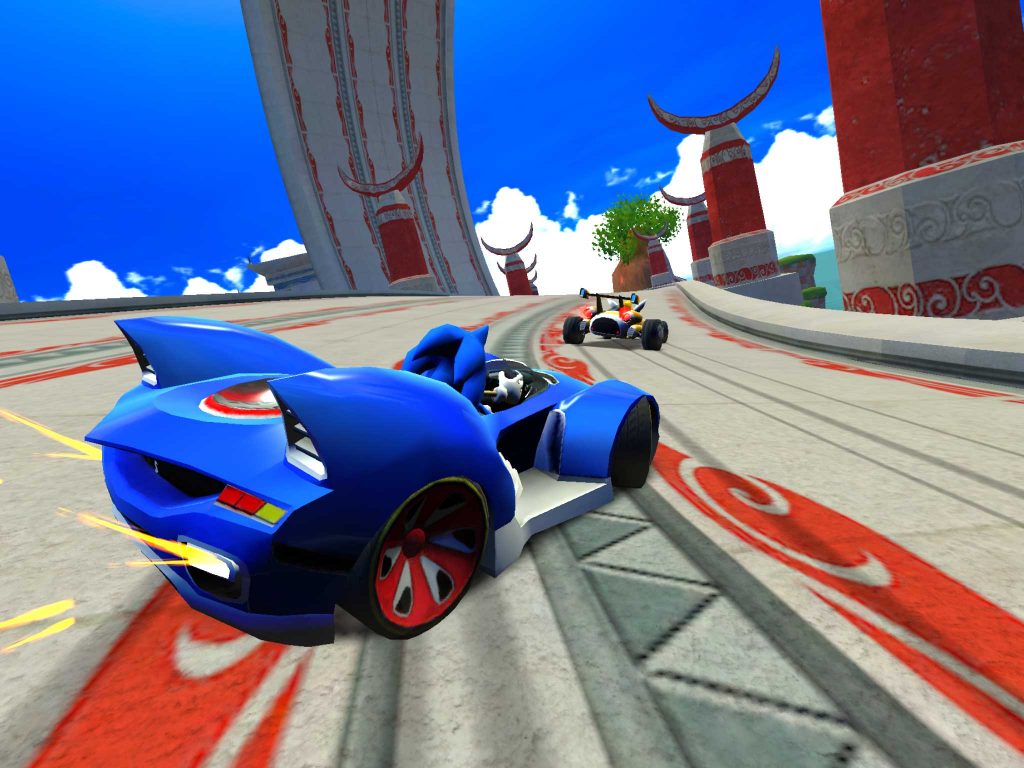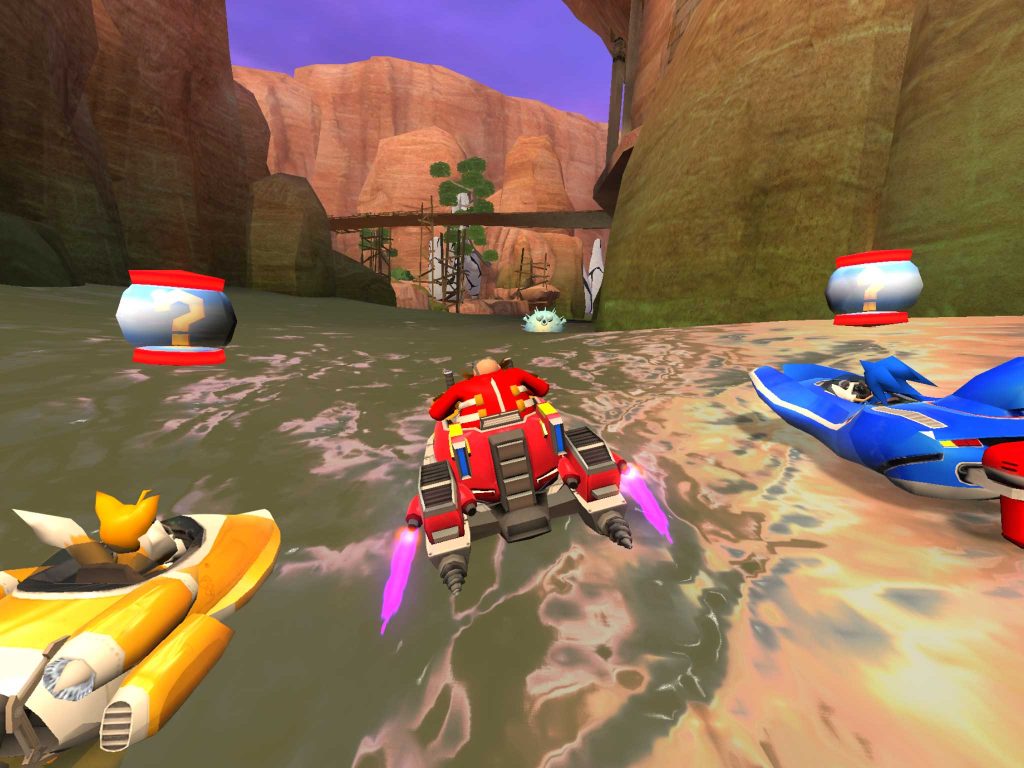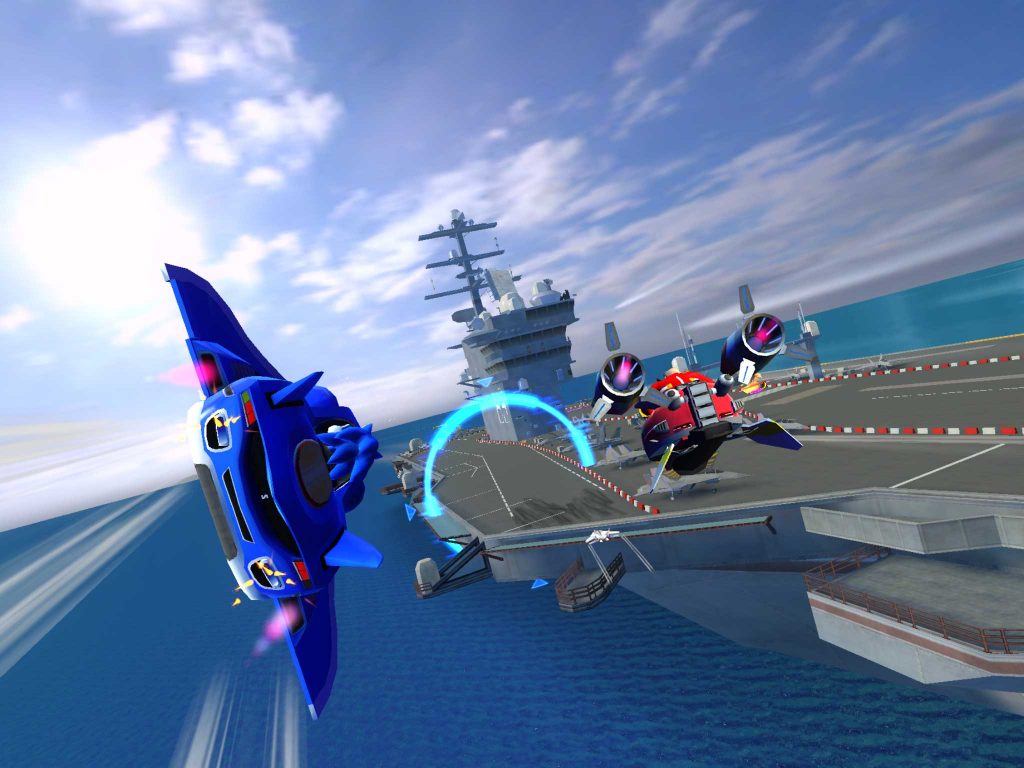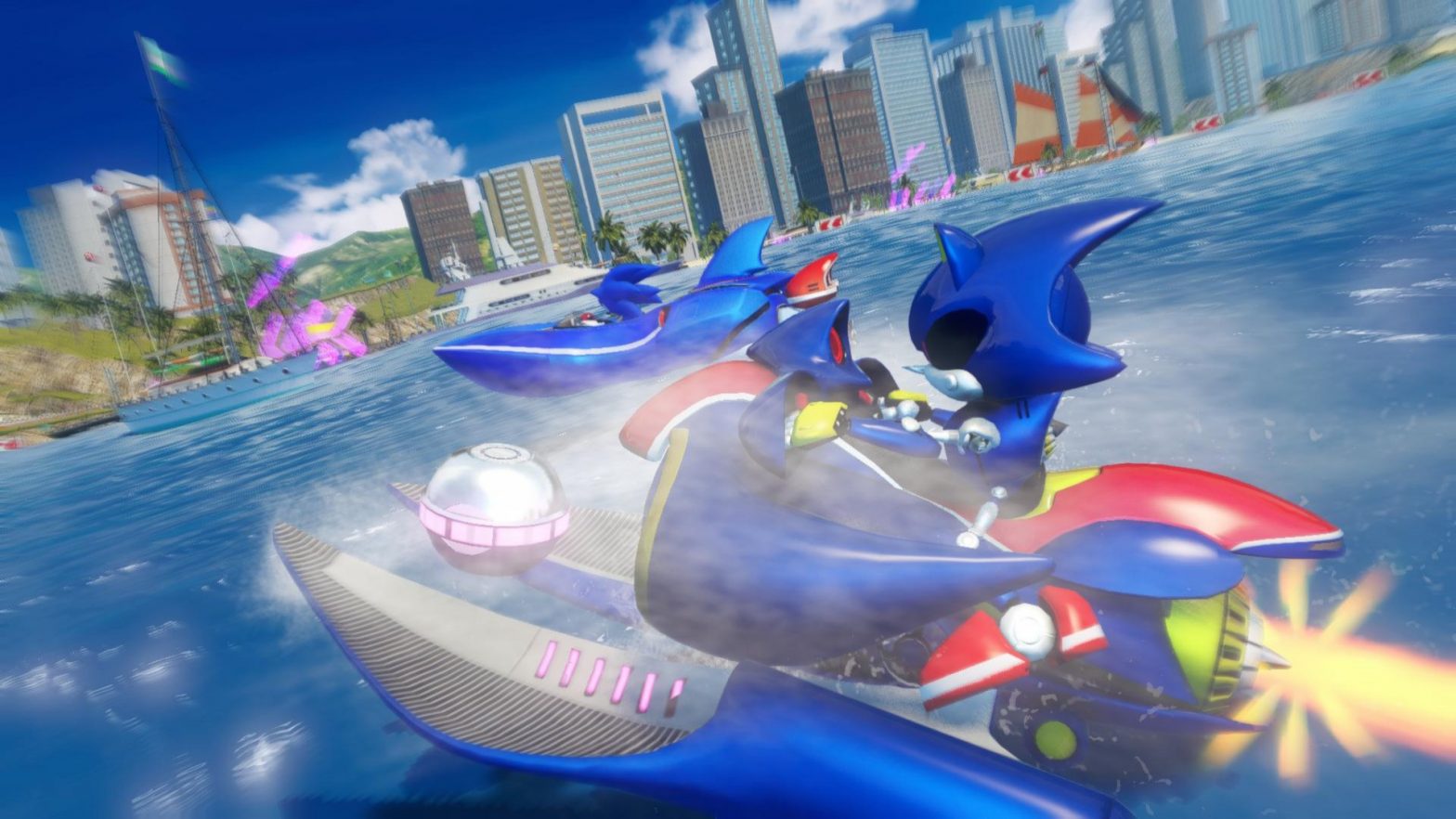This review was originally written for Push-Start a long time ago. Consider this version 2, heavily edited for readability and style.
-Segazoom
Nostalgia is a powerful thing. It should be made clear that I am a ride-or-die SEGA fan. It’s in my entire web presence. The nostalgia well that is available from this game’s broad SEGA concept is expansive. As luck would have it, Sonic Transformed goes above and beyond in the call of duty, delving through many more nooks and crannies of SEGA’s history than you would reasonably expect. This is truly a game for fans, but does that mean it’s a game ONLY for fans? Au contraire, this is probably the best the kart racer has ever been, but that’s not to say there aren’t problems along the way.
Given the well-established format of a kart racer, Sumo Digital could have easily gone the simple route for a sequel and just pumped out new tracks and characters, changing almost nothing. Instead, they have built heavily on the base systems they made for their first game; completely overhauled the weapons and most of the character roster; and the pièce de résistance; two new modes of transport in flying and boat racing. This is where the transformed bit comes in.

The core mechanic of driving effectively in Sonic Transformed is efficient usage of drift and boost. Whenever you drift, you slowly gain boost levels up to a maximum of three levels. If you can plan your route so that you only stop drifting to make use of your boost, top speed will become permanent. Interweave this with the boost pads on the course, tricks from ramps – flight obviously doesn’t count here – or during transformation and you will be able to beat all comers. When you get your racing line and boost chains flowing, your adrenaline flows with it. Any good adrenaline rush is heightened by the fact a lack of alertness or simply getting unlucky with enemy fire can crash you back to earth (or sea). It’s no different here. The rules somewhat change in flight mode; here, hitting boosts is important, but making your flight path as efficient as possible through the surprisingly expansive space you are afforded is essential. Invisible walls are not nearly as prevalent as you’d expect, so test those boundaries, avoid chunks of scenery, and you too can be the fastest thing alive.
Instead of just sticking with the Mario Kart trope – yes, there’s gonna be a lot of MK comparisons here, but it only seems apt – of a Grand Prix with four-race cups each as the main mode (don’t worry, traditionalists, that’s still here), Sonic Transformed expands on it with its World Tour mode. In this mode, you traverse through various categories of events, earning stars to unlock new content. Your bog standard races are here, but variations exist too. There are battle races that are a fight for survival as much as a race, drift challenges where you have to stay within a coloured strip while in a drift, a la the Heart Stopper mode in Outrun 2, and pursuits where you must destroy a tank that attacks you with heavy artillery. Yes, you did read that last one correctly. Speaking of Outrun 2, the drift mechanics themselves are effectively taken wholesale from that magnificent title, which is no bad thing. This mode is where the bulk of the unlockable character roster can be collected; The rest are in the well-worn Grand Prix mode.

There’s also another racing staple available in a time attack mode. You are offered a difficulty curve of ghost laps to defeat on each track across the gamut from Easy to Expert. These Expert ghosts are exceptionally challenging and will require a concerted effort of course study and memorisation to take down. Expert difficulty works particularly effectively in the truest sense of expert. It makes every challenge the game can throw at you demanding. This still rarely feels unfair, thankfully. Execution of clean racing line, efficient boosting and chained drifting can overcome even the toughest of tasks. This is quite an achievement, especially in a kart game, where weapon pickups are random and can cut your run short if you get hit at the wrong time. That happens, but rarely in a catastrophic manner.
The weapons suite is really quite interesting. Not a single one of them is ineffective. The banana skin or green shell-level weapons are pleasing in their absence; everything will probably hit. As a sample, consider the blowfish that drops behind you, casting a wide hitbox in which to ensnare your opponent and the hot rod which gives you a speed boost for a limited amount of time but explodes if you keep it too long and as such has its own risk-reward seesaw. Every character also has a unique All-Star. All provide full boost top speed for their duration on top of a weapon curated to the character’s franchise For example, the head primate from Super Monkey Ball, AiAi, gains a plentiful supply of bananas and rattles along is his natural habitat of a gacha ball. While the game does weight pickups slightly depending on your current position, it remains possible to obtain All-Stars in the first three places, converting the standard kart racing codex of weapons as a comeback mechanic to simply a strategic token on the playfield. Cutting away the helplessness of blue shell robbery may remove some beginner friendliness, but adds depth.
The audiovisual package is excellent, with stages containing cute little touches ranging from the obvious to the deep-cut die-hard reference, orchestrated with catchy medleys of classic songs from the SEGA archives. The character models on some characters look a little strange, but this is just where characters have been homogenised to the house style of the game. Some voices have degraded without their original voice actors. The backgrounds are gorgeous, and the animation is smooth.

It really is unfortunate that the game is beset by some irritating glitchiness. Ramps will occasionally halt your progress for no discernible reason if you hit them slightly off-axis. The glitches intensify in online play. Matchmaking is unstable but entertaining when it finally works. Private sessions are much smoother if you have a group of compadres to jump in with.. Ties in online races are inconsistent and will have you flip-flop from one position to the other, potentially costing you a Grand Prix. Annoying stuff.
Sumo have clearly studied the kart racing genre and identified its stale elements, attempting to advance it from a mainly luck-based party game to a legitimate racing game that coincidentally features weapons. I assume that was the goal, anyway. Mission accomplished on that one. Not to say it feels inaccessible as a casual party game, as the core elements are still there for surface-level projectile flinging and crashing. It’s a real surprise package with some fiendishly obscure references for the long-term SEGA fan. Be thankful I didn’t spoil them all. Get yourself on that starting grid and start driving. And boating. And flying.

